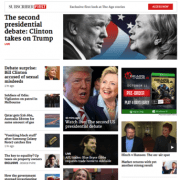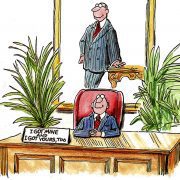Imagine. The driverless and connected car. The Jetsons meets Blade Runner, with wheels– for now!
The benefits are mind-boggling – but so too are the challenges affecting safety, privacy, regulation, law enforcement, and more.
Yet, to the general community, car makers don’t appear as alert and active as they could be in confronting these issues. Do they understand the value of engaging with major stakeholders long before the technologies swamp markets with unexpected vulnerabilities and are hit heavily by retrospective regulation?
So, keep imagining. You enter your “car”, without even a fob, and merely utter your destination. The Occupant ID and GPS already know you. The electric powertrain whirrs. You’re off, as you swivel on a monocoque-encased seat to face …. your workstation, where once was a steering wheel and dashboard.
Is this automotive nirvana for real?
Would you be in your seat, “unnecessarily” scanning the road; fretting about whether those twitchy 50 on-board modules are blinded by the sun and will plough you into a truck? Or would you be totally disengaged? What will be your legal obligation in terms of being “in control”? We’ve seen the first fatality already with a driverless Tesla.
But while the current question may be whether program engineers can foresee every permutation of personal safety risk, this is far from the only issue. In fact, the connected car will no longer be just your car. It is your life, your possessions, your history, your business, your misdemeanors, your purchases, your buying, travel and driving habits and all that can be communicated by networks.
What happens when you being driven along and, abruptly, everything powers down? As the vehicle slides itself safely into a roadside bay, a message instructs: “Your vehicle authority is suspended.”
It seems your bank has won a court order to take over your vehicle … it’s about a disputed payment, or a business debt, or an identity anomaly, or … Whatever. But what is clear is you are not in control. The cloud, and everyone connected to it, can potentially and remotely take control.
What else can happen? May creditors pinpoint your location to serve you? Can mobile salespeople intercept you in car parks? Will alienated spouses find you? Are business secrets accessible via your mobile platform? You, and your data, are an open “book”. Legal use of data may come with the purchase or lease of your vehicle, and on-selling deals done without you; like online software. Do we really understand what will be done with our data?
Of course all of this may be solved with a combination of regulation, legislation and technology.
But is the automotive industry active enough in shaping the outcome before it is shaped for it?
There is a huge task ahead in co-ordinating stakeholder relations, community consultation and government relations to draw the parameters of acceptability for communities and customers.
Without this, the legislation and regulation will come anyway – especially after some data breach, like the census scenario. At that point everything will happen to the car industry, not with it.
We see the opportunity to be active now and to allow customers and communities to shape the local evolution of the connected car … rather than try to do this after a crisis. The question is: will the car industry be caught asleep at the wheel?




